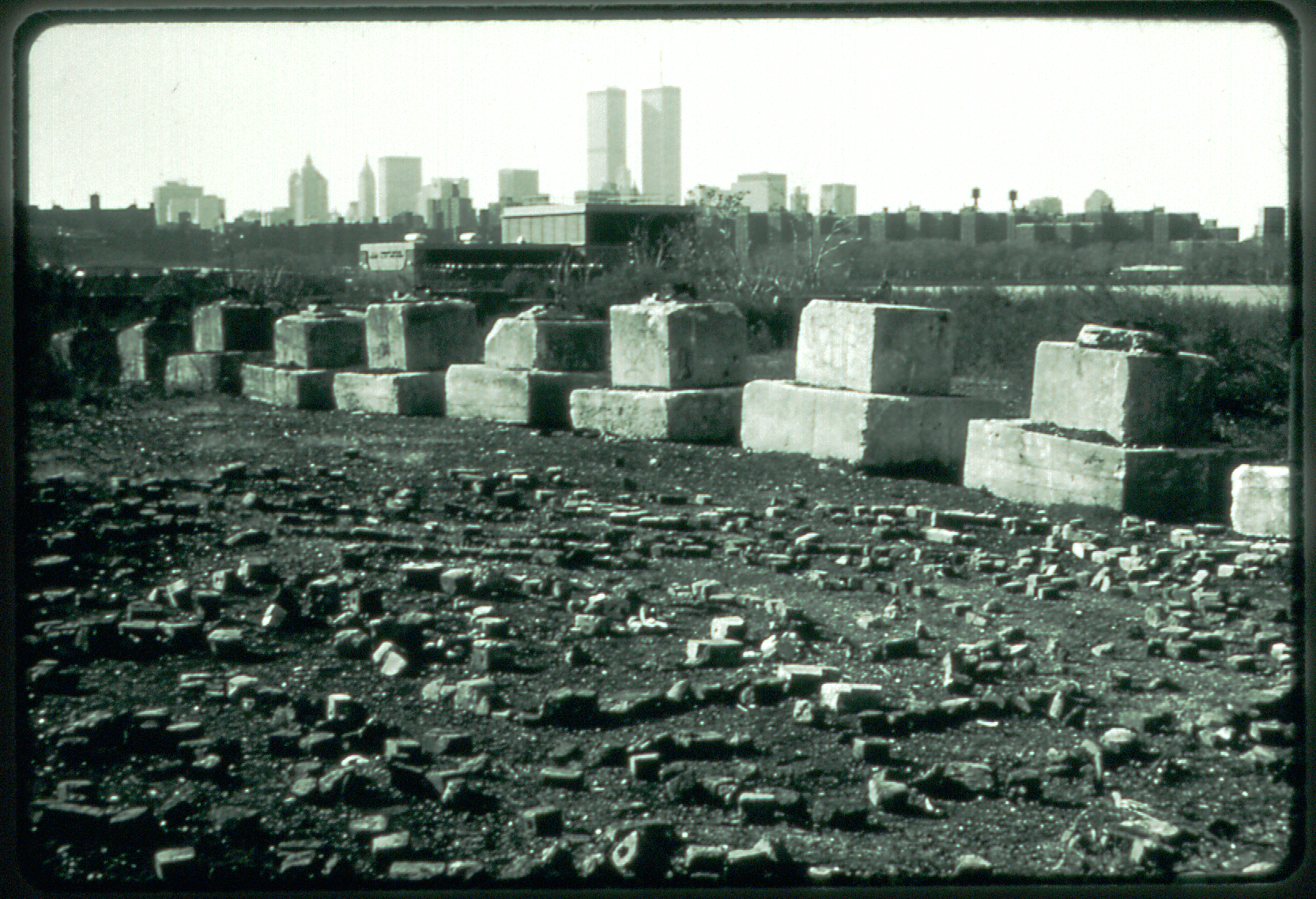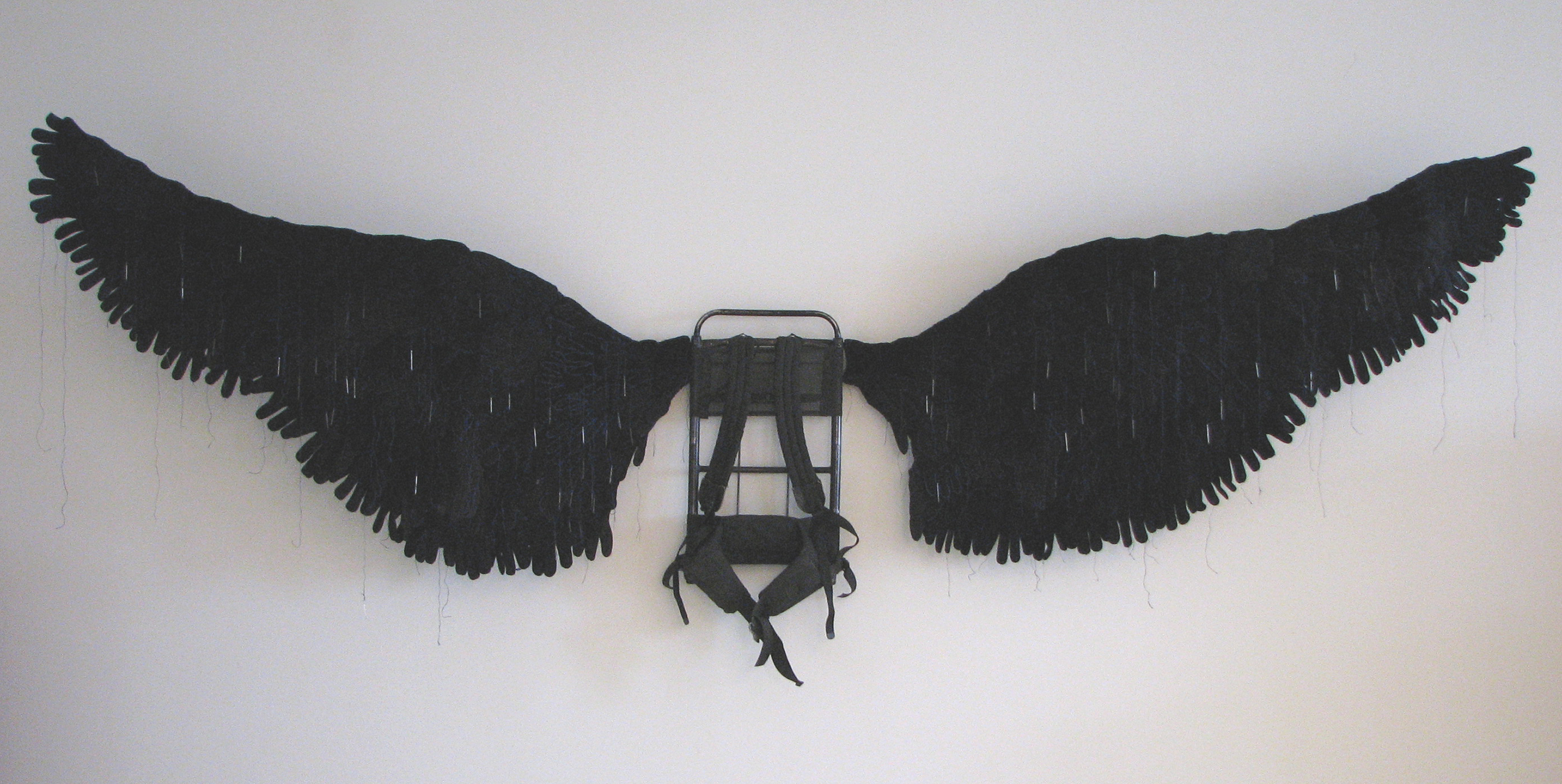MNEMONIC: A 9/11 MEMORIAL EXHIBITION
mne·mon·ic
The American Heritage® Dictionary of the English Language, Fourth Edition
adj. Relating to, assisting, or intended to assist the memory.
n. A device, such as a formula or rhyme, used as an aid in remembering.
[Greek mnmonikos, from mnmn, mnmon-, mindful. See men-1 in Indo-European Roots.]
mne·moni·cal·ly adv.
Copyright © 2000 by Houghton Mifflin Company.
Published by Houghton Mifflin Company. All rights reserved.
I ’m writing this statement while listening to the reading of the names of the 2,801 dead at Ground Zero. Our city is muted by this difficult time of grief coupled with disbelief. We try to remember this day one year ago, and what the world was like on September 10, 2001. When a plane overhead was simply a plane in an amazingly brilliant blue September sky. It is still impossible to come to terms with that gaping hole in the ground and in our hearts.
A mnemonic device helps the memory to remember. This exhibition of works by individual artists brings all the voices together into a rich, complex expression of the inexpressible nature of 9/11. What this exhibition attempts to do is to find out whether art still has the power to affect change. Or perhaps to inspire feelings of serenity or peace. Or to give a moment of recognition or identification, a place where the sense is that one is not truly alone in the world.
Having an open call for entries for an exhibition so fraught with emotional subject matter can be a risky proposition. What I found is that somehow these works became more and more personal as the entry deadline drew nearer, making this show powerfully resonant and beautiful. They are about the anguish of death as well as the power of communion and spirit. The exhibition provides an entire range of responses to the harrowing events of 9/11. Artists not involved personally present abstract works that attempt to come to terms with the horrors of loss and mass destruction. Other works are more purely patriotic and represent an attempt to show support for the human losses and for the remaining who bear the wounds. And still other works, the most poignant, arise out of personal contact with tragedy. A Long Island City artist, Roxana Alger Geffen, took this year to try to come to terms with the death of her father in the North Tower on September 11th , and submitted a painting of her father’s funeral. Her statement reads, “I have spent the last year sorting out my private griefs but also thinking about the experiences I have shared with others: my family, New Yorkers, Americans.” Elizabeth Riley, of Manhattan, submitted a collage based on an installation of men’s ties she was collecting from her artist friends. An email from a colleague’s husband dated September 9th is incorporated into the work. In it, he tells her where each tie came from that he donated. He died September 11th on the plane that crashed into the Pentagon. Linda Pomponio, a student in LaGuardia’s art department, submitted an eerie group of black and white photographs, from an exposed roll that she inadvertently reached for as she watched the Towers going down from her window on 14th Street. Their shapes are ghostly reminders that hover behind close up portraits of her young cousins taken in 1996.
Certain works stand out; capturing a sense of history, and of what our city was like prior to 9/11. Dennis D’Amelio’s atmospheric oil paintings completed during a residency at the World Trade Center in 2000, give us a rare view of the city as landscape, reaching as far as the eye can see in all directions, from his studio high on the 91 st floor. Pearl Rosen’s digitized snapshot of her father, Izzy, at the building of the Twin Towers in 1972, places us in her personal homage to her father who passed away in 1985, along with the disappearance of the Towers. Lynn Bell’s photographs of the Towers off in the far distance, taken in 1999, preserve a part of the forgotten landscape along Brooklyn’s waterfront. The foundation stones in the foreground are an eerie foreshadowing of the graveyard the Towers were later to become.
Other remarkable voices are heard as well. Professor Adele Shtern’s class, The Art of Typography, took place last fall at the Borough of Manhattan Community College’s computer center at Fiterman Hall (located two blocks from the WTC) which suffered damage and is still not open today. Students were on the way to school or already there on the morning of 9/11. Her assignment for them was one of spiritual healing and the practicalities of learning the art of typography. As their classroom was displaced, we are glad to exhibit the results of their project. An unusual group of marker drawings by Steve Sandberg represents an untutored, intuitive response to an enormously unfathomable tragedy. A teacher of special education students in the New York City school system for 30 years, Sandberg and his students watched the Towers go down from their classroom window. In the coming weeks and months, he spontaneously generated hundreds of drawings with a personal iconography which often incorporated the numbers 9 and 11, symbols of faith such as stars and crosses, the Pentagon, crashing or falling planes, parachutes and umbrellas, and the personification of evil embodied in mutant creatures and monsters.
And the amazingly atmospheric photographs of Kyle John Terboss taken in Ground Zero days after it happened: his intimate portrait of an abandoned, dust covered fruit stand reaches back to the distant past of Pompeii and Herculaneum, while others of rescue workers and vehicles backlit in an unearthly fashion and framed by the skeletal iron framework we now associate with innumerable images of “the pit.” And finally, Joost Romeu’s seemingly simplistic but powerful icon of the Towers is linked inextricably with Michael Marston’s haunting photograph of the “Tribute in Light” memorial installation seen from his Brooklyn vantage point.
Louise Weinberg
September 11, 2002
Mnemonic: A 9/11 Memorial Exhibition has been produced with the support of the Long Island City Business Development Corporation; Public Access New York UNIX (Panix.com); VIP International Relocations, LTD; LICWeb.com; Kansas Design Studio; and LaGuardia Community College.
Section III Mnemonic Exhibition
Dennis D’Amelio | Eleanor Schnurr | Elizabeth Riley | Ingrid Dohm | Irene Young | Jenny Argie | Joost Romeu | Jacqueline Lima | Linda Pomonio | Lynn Bell | Michael Marsten | Morgan Taylor | Naomee Guest | Naoyuki Yoshida | Pearl Rosen | Rhea Sanders | Michael Rippens | Roxana Geffen | Sharon Florin | Steven Sandberg | Tremain Smith | Steven Frim | Virginia Uhl
Section III
Janet Nolan | Paul Villinski | Louise Weinberg







































